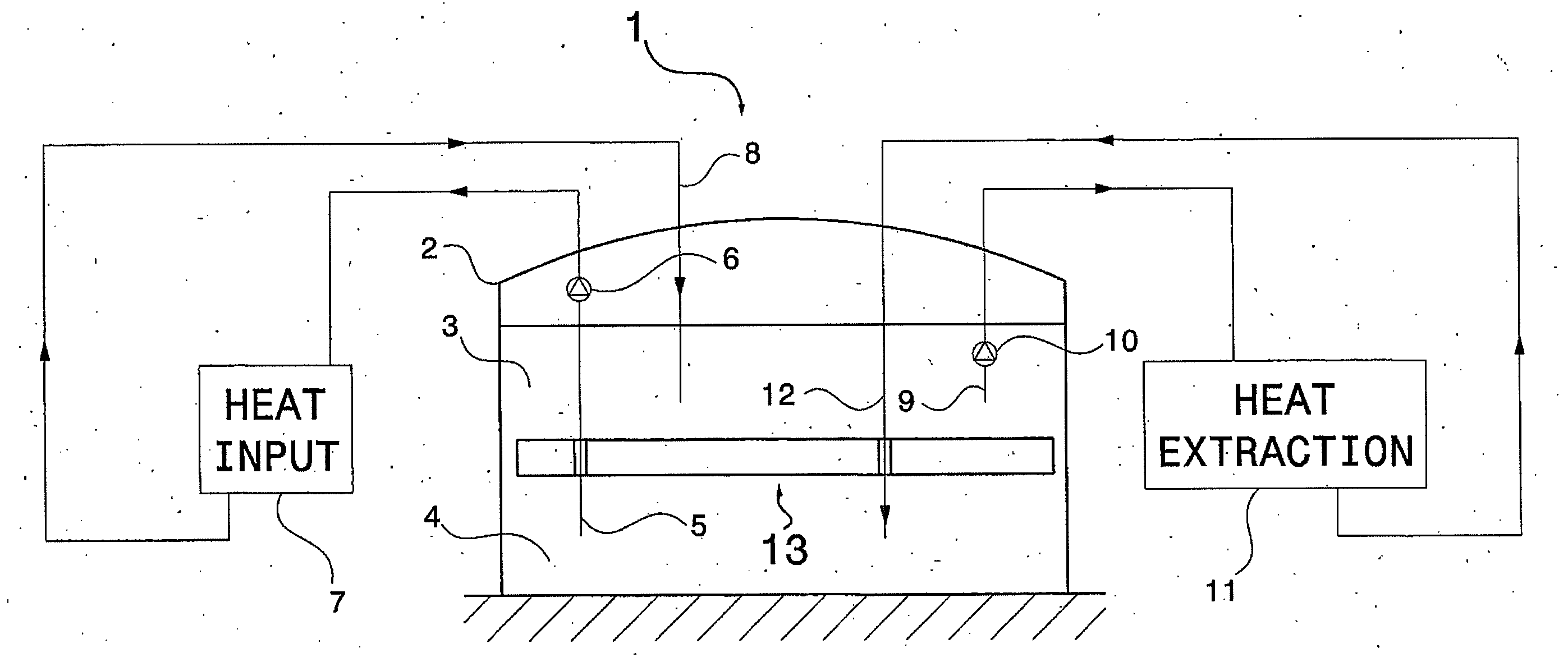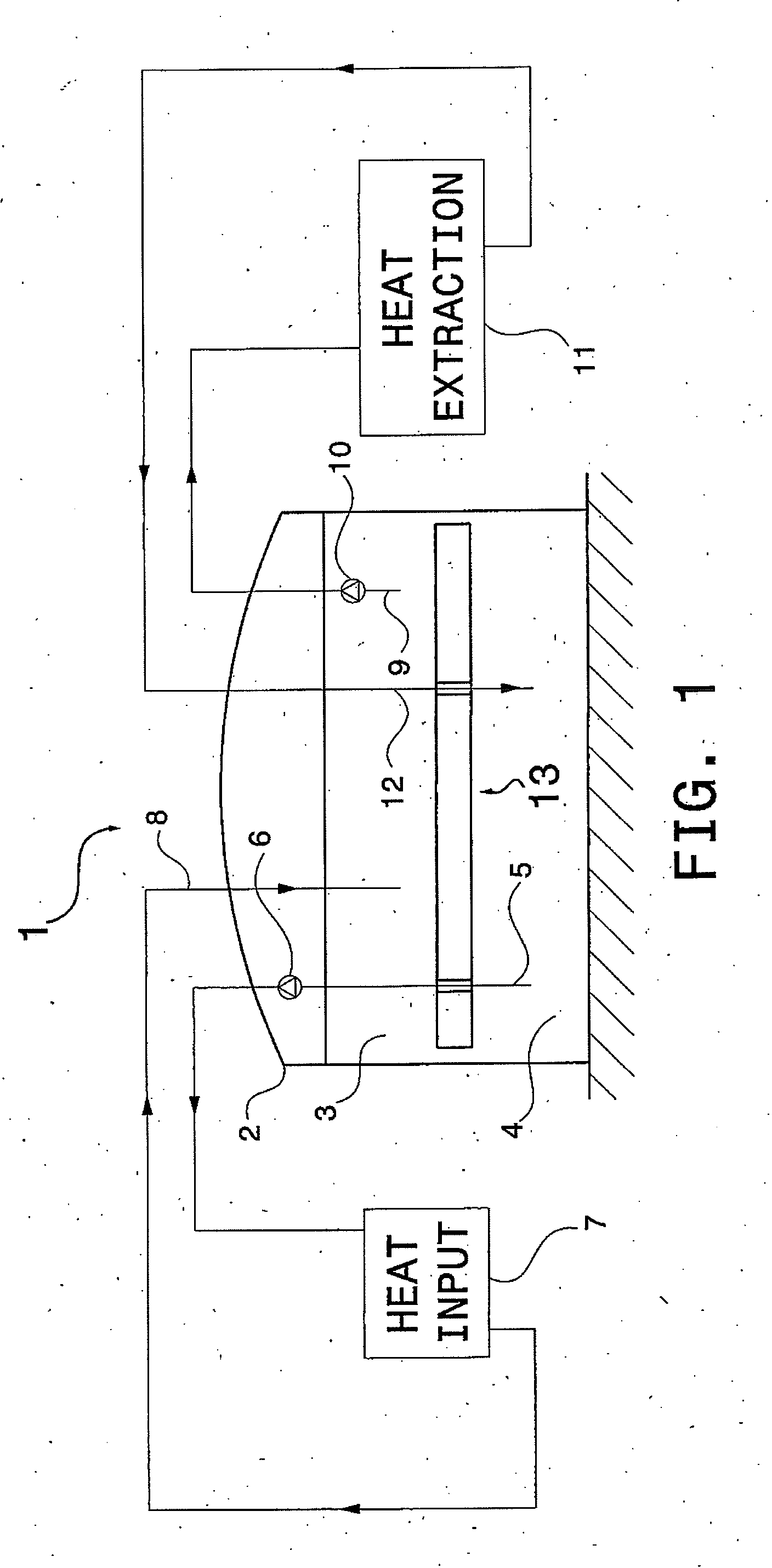Dual thermal energy storage tank
a technology of thermal energy storage and storage tanks, which is applied in the direction of lighting and heating apparatus, heating types, greenhouse gas reduction, etc., can solve the problems of increasing the thermal loss of the storage system or the cost of auxiliary equipment, piping, etc., associated with the additional tank, and achieves the effect of easy withstand, constant volume and easy adjustment of the density of the barrier
- Summary
- Abstract
- Description
- Claims
- Application Information
AI Technical Summary
Benefits of technology
Problems solved by technology
Method used
Image
Examples
Embodiment Construction
[0062]FIG. 1 shows the schematic arrangement of a thermal storage system (1), which can be the storage system of a solar thermal power plant. The storage system (1) includes a thermocline storage tank (2), which stores two masses of fluid at different temperatures. The mass of colder fluid (4) is normally denser than the mass of hotter fluid (3), and is stored below it. The tank can typically be of the vertical cylindrical type, with a diameter of about 40 m and a height of about 15 m. In many common solar applications, the cold fluid will usually be at a temperature of about 300° C., and the hot fluid will be at a temperature of about 400° C., and the fluid stored at both temperatures will typically be a mixture of molten nitrate salts.
[0063]The barrier member object of the present invention, represented schematically in in FIG. 1 and designated by numeral (13), is located in the interface between the hot and cold fluids, physically separating and insulating them, so that the heat ...
PUM
 Login to View More
Login to View More Abstract
Description
Claims
Application Information
 Login to View More
Login to View More - R&D
- Intellectual Property
- Life Sciences
- Materials
- Tech Scout
- Unparalleled Data Quality
- Higher Quality Content
- 60% Fewer Hallucinations
Browse by: Latest US Patents, China's latest patents, Technical Efficacy Thesaurus, Application Domain, Technology Topic, Popular Technical Reports.
© 2025 PatSnap. All rights reserved.Legal|Privacy policy|Modern Slavery Act Transparency Statement|Sitemap|About US| Contact US: help@patsnap.com


